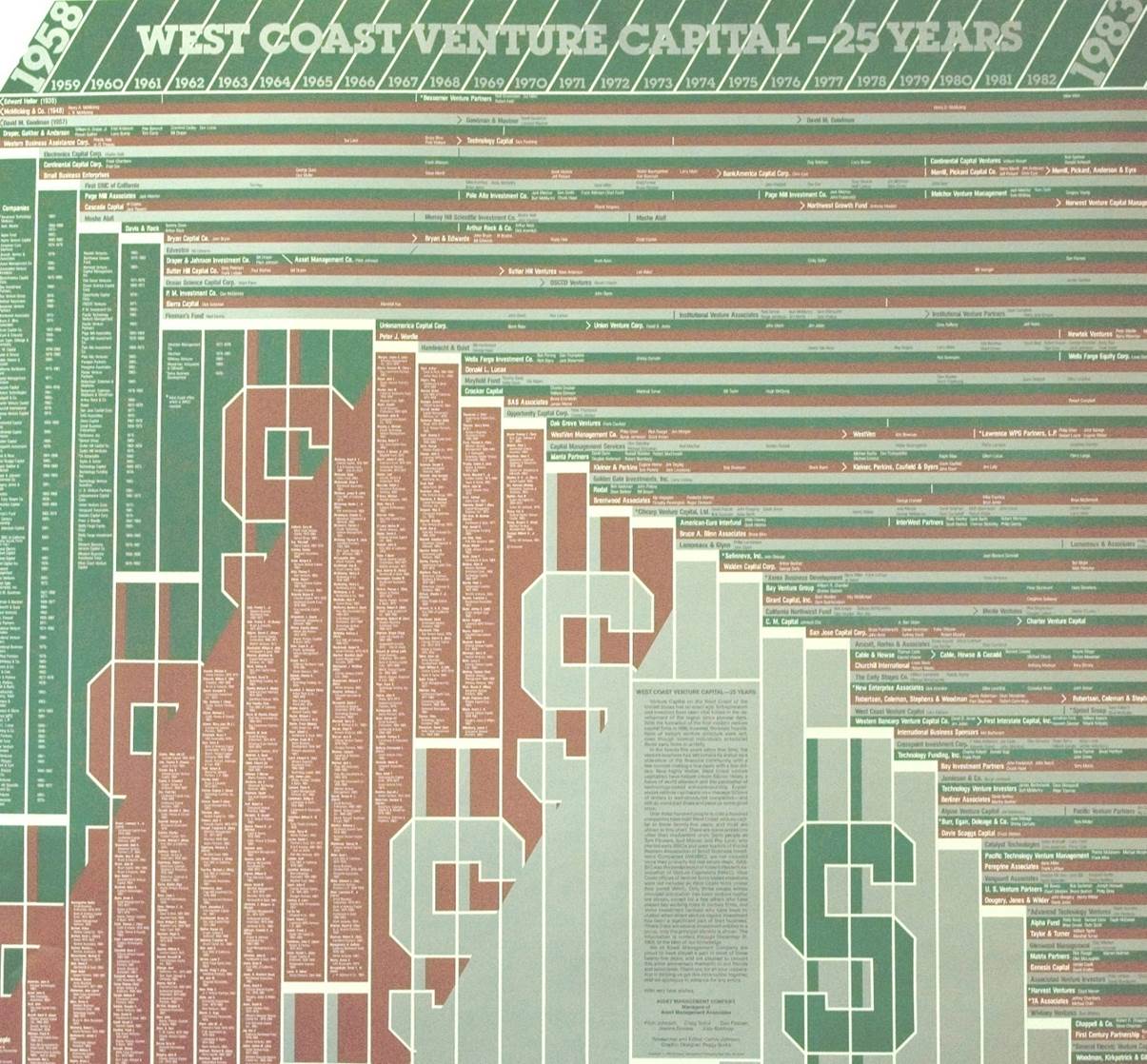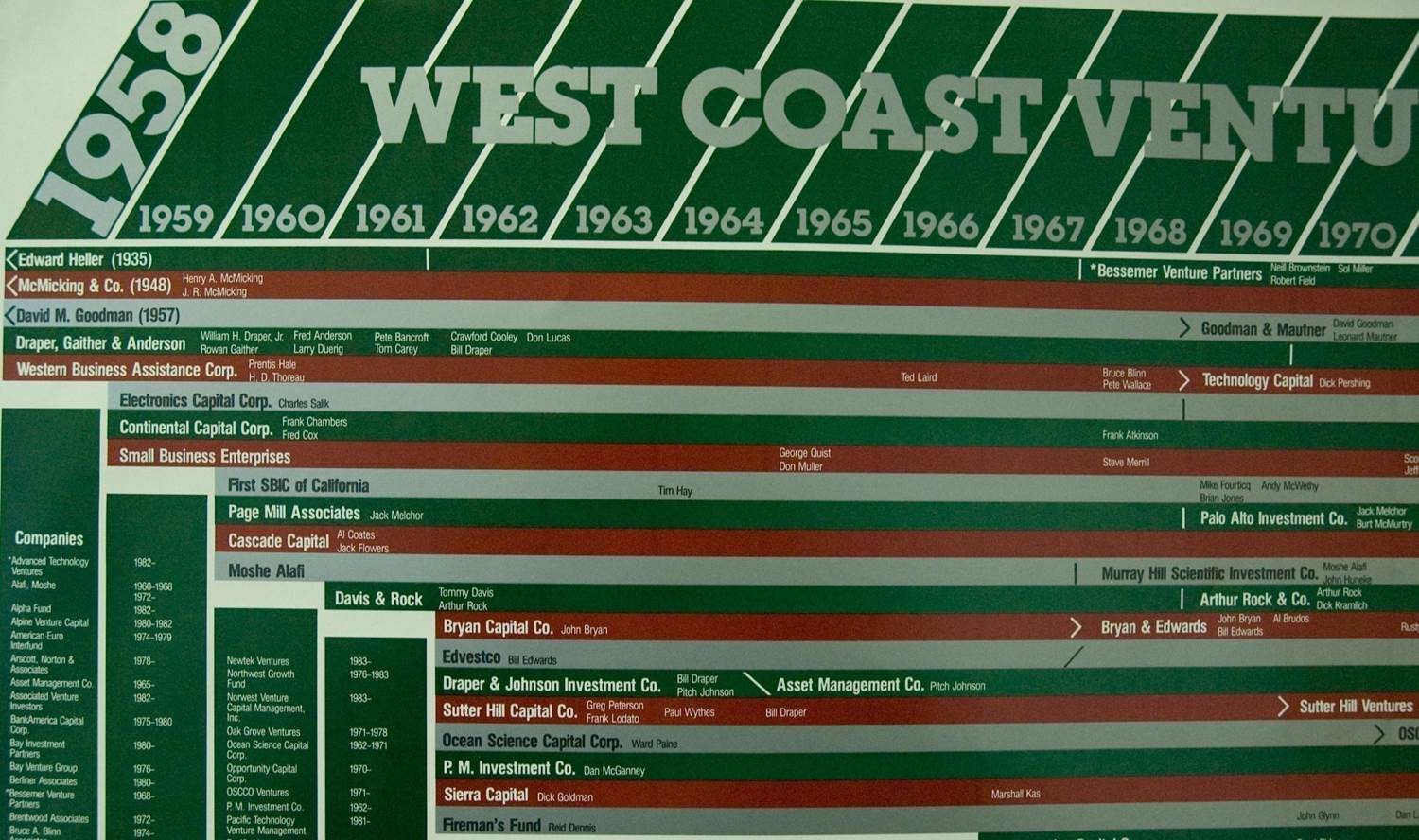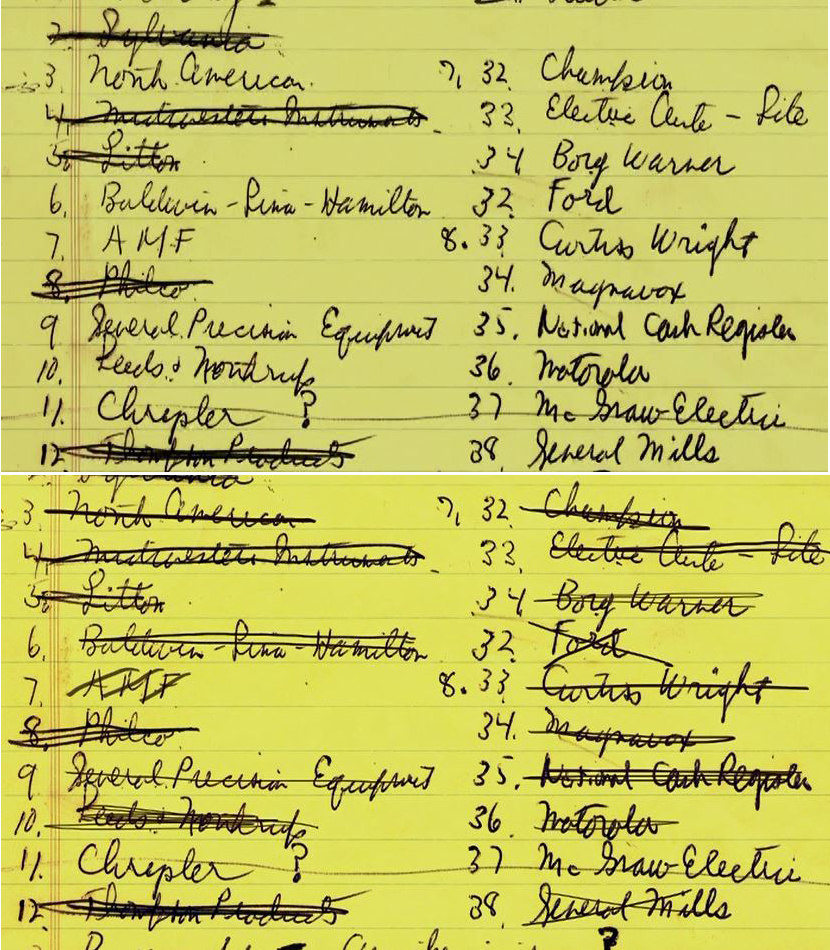What I am reading now following my recent post The Complexity and Beauty of Innovation according to Walter Isaacson is probably much better known: Innovation in Silicon Valley at the time of Silicon – Fairchild, Intel and the other Fairchildren. I have my own archive, nice posters from those days, one about the start-up / entrepreneur genealogy, with a zoom on Fairchild and one on Intel and one about the investor genealogy
Entrepreneurs…
“There were internal problems in Palo Alto. Engineers began defecting, thus seeding the valley with what became known as Fairchildren: companies that sprouted from spores emanating from Fairchild.” [Page 184] “The valley’s main artery, a bustling highway named El Camino Real, was once the royal road that connected California’s twenty-one mission churches. By the early 1970s – thanks to Hewlett-Packard, Fred Terman’s Stanford Industrial Park, William Shockley, Fairchild and its Fairchildren – it connected a bustling corridor of tech companies. In 1971, the region got a new moniker. Don Hoefler, a columnist for the weekly trade paper Electronic News, began writing s series of columns entitled “Silicon Valley USA,” and the name stuck.” [Page 198]
… and Investors
“In the eleven years since he had assembled the deal for the traitorous eight to form Fairchild Semiconductors, Arthur Rock had helped to build something that was destined to be almost as important to the digital age as the microchip: venture capital.” [Page 185] “When he had sought a home for the traitorous eight in 1957, he pulled out a single piece of legal-pad paper, wrote a numbered list of names, and methodically phoned each one, crossing off the names as he went down the list. Eleven years later, he took another sheet of paper and listed people who would be invited to invest and how many of the 500’000 shares available at $5 apiece he would offer to each. […] It took them less than two days to raise the money. […] All I had to tell people was that it was Noyce and Moore. They didn’t need to know much else.” [Pages 187-88]
The Intel culture
“There arose at Intel an innovation that had almost as much of an impact on the digital age as any [other]. It was the invention of a corporate culture and management style that was the antithesis of the hierarchical organization of East Coast companies.” [[Page 189] “The Intel culture, which would permeate the culture of Silicon Valley, was a product of all three men. [Noyce, Moore and Grove]. […] It was devoid of the trappings of hierarchy. There were no reserved parking places. Everyone including Noyce and Moore, worked in similar cubicles. […] “There were no privileges anywhere” recalled Ann Bowers, who was the personnel director and later married Noyce, [she would then become Steve Jobs’ first director of human resources] “we started a form of company culture that was completely different than anything that had been before. It was a culture of meritocracy.
It was also a culture of innovation. Noyce had a theory that he developed after bridling the rigid hierarchy at Philco. The more open and unstructured a workplace, he believed, the faster new ideas would be sparked, disseminated, refined and applied.” [Pages 192-193]



